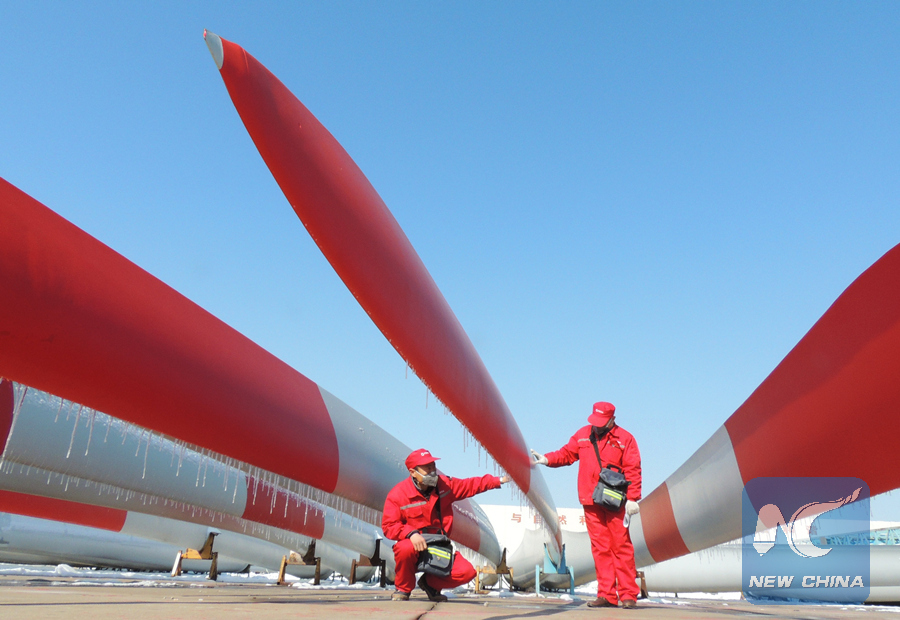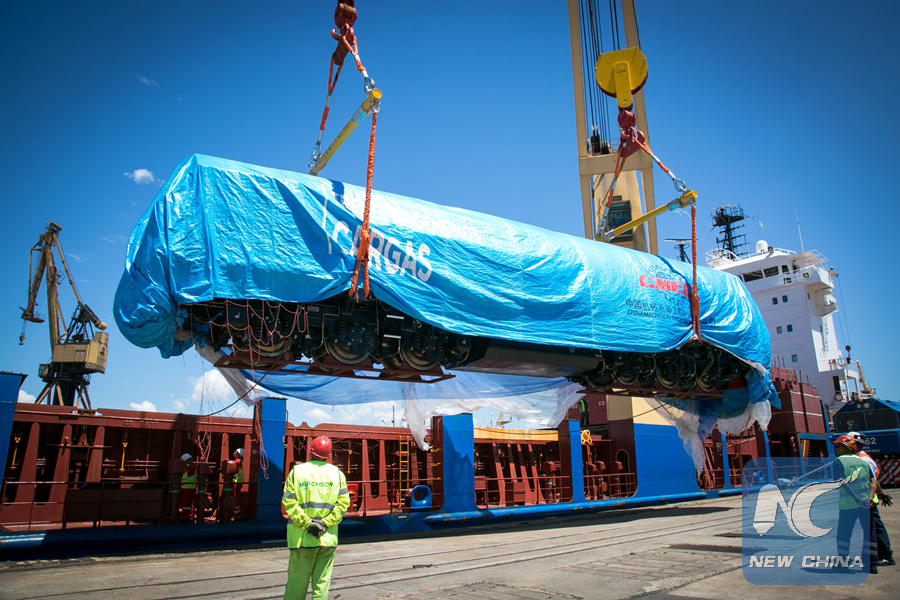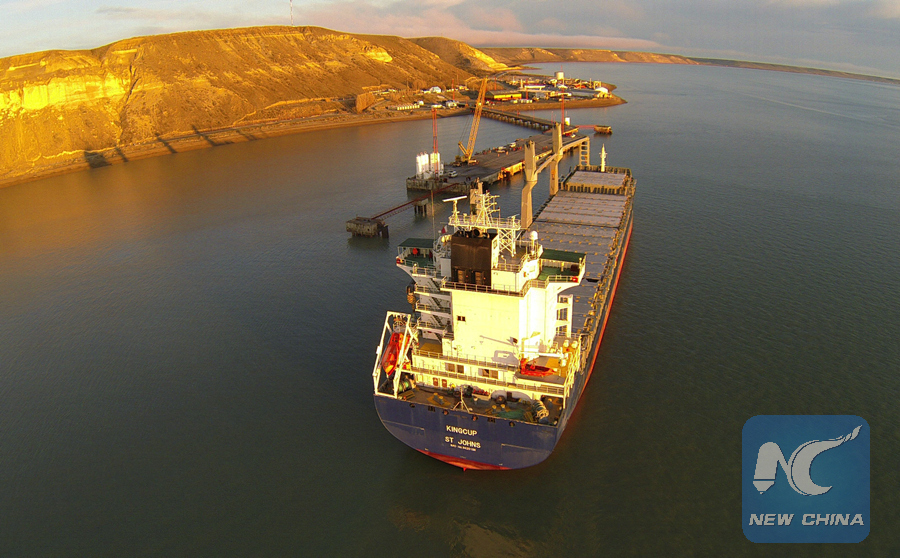
Quality control personnels examine a wind-power blade at Zhongfu Lianzhong Composite Group Co., Ltd in Lianyungang, east China's Jiangsu Province, Nov. 26, 2015. Zhongfu Lianzhong Composite Group, a wind-power blade maker ranking first in Asia and the third in the world in terms of production ability, has a capacity to annually produce 10,000 megawatt-level wind-power blades. Its products export more than 20 countries and regions, including Argentina, Britain and Japan. (Xinhua/Geng Yuhe)
BUENOS AIRES, May 12 (Xinhua) -- We are finally arriving at the last stop of our 24-hour trip along the Belt and Road routes -- Argentina. This year marks the 45th anniversary of the establishment of diplomatic ties between China and Argentina. Let's see some examples of the fruitful cooperation between the two countries.
Argentina and China enjoy complementary advantages in the economy: export of Argentine farm products and energy help ensure China's food and energy security, while the infrastructure projects within the Belt and Road Initiative can boost Argentina's development, according to Argentine President Mauricio Macri.
The two countries have great potential in cooperation with regard to infrastructure construction, Macri said.
The current cooperation involves railway, solar energy and hydroelectricity, and within the framework of the Belt and Road Initiative, China and Argentina will promote the implementation of more projects, said the president.

Photo provided by Argentina's Transport Ministry shows workers unloading one of the two new Chinese-built locomotives for the Belgrano Line, in Buenos Aires, Argentina, on Feb. 8, 2017. Two Chinese-built locomotives arrived in Argentina on Wednesday, as part of an ambitious plan to revive the South American country's aging cargo rail network and spur the country's economic development. (Xinhua/Argentina's Transport Ministry)
Take railway construction for example, with China's investment and technology, the South American country is revamping its Belgrano Cargas cargo rail network, which is essential to the transport of farm products.
The China-made trains are quieter than their precursors, some of which date from the 1970s, and are more energy efficient, even though passenger cars are air conditioned.
The modern cars also have special features for commuters with disabilities, and are installed with security cameras and a safety system that prevents the train from moving while doors are open.
Fabian Malvillini, general coordinator of Engineering Management at the state-run rail operator SOFSE, said the upgrade has been notable, especially in terms of bolstering safety features.
"For us, it means a very significant technological change, mainly in terms of security. It is a very good product and we are very pleased to be able to work with the engineering staff (from China), who are very good people and very professional," said Malvillini.

Image taken on July 29, 2015 and provided by Electroingenieria S.A. (ELGIN) company shows the arrival of the vessel that transports the first machines for the preliminary construction works of the dams "Nestor Kirchner" and "Jorge Cepernic", in the port of Punta Quilla, Santa Cruz province, 2,810 km away of Buenos Aires city, capital of Argentina. The cooperation between Argentina and China for the construction of two dams, the "Nestor Kirchner" and the "Jorge Cepernic", key for the energy system of the South American country, moved forward this week, with the arrival of the first machines necessary for the start of the works. The machines arrived to the port of Punta Quilla, Santa Cruz province, on board of the merchant ship King Cup, from China. The hydroelectrical complex will have a potency between both dams of 1,740 megawatts, and is taken forward with funding of China for 4,770 million U.S. dollars. (Xinhua/ELGIN)
There is also plenty of room for the growth of cultural exchanges. Every year, more than 150 million Chinese people travel abroad, but only about 30,000 of them visit Argentina, according to Macri.
The president expected more exchanges and cooperation in football, given the popularity of many Argentine football clubs among the Chinese people.
"Argentina is one of the countries that are most distant from China. But the distance is not the obstacle for our country to attend the Belt and Road Initiative. The upcoming Belt and Road Forum for International Cooperation is a great platform for communication, Argentina is looking forward to participating in it," Macri said.

